#Autoimmune Disease in Children
Explore tagged Tumblr posts
Text
Top 10 Signs of Autoimmune Disease in Children
Parents try to keep their children away from any harm coming their way. They constantly monitor their growth and development and watch for signs of illness. However, there are a few diseases in children that they find very hard to diagnose. One of these is autoimmune disease, entailing a group of intricate disorders whereby the body’s immunity stages an attack against a number of healthy cells, tissues, and organs of the body.
Autoimmune Disease in Children

When the immune system begins to attack the body’s healthy cells, tissues, and organs, results in development of autoimmune (rheumatic) disorders.
Even though autoimmune diseases are typically linked to adults, parents should be aware that children can also be affected by similar conditions, which tend to be much severe in kids. This group of diseases is often challenging to diagnose and difficult to treat in children .
The common autoimmune diseases affecting children include various subtypes of juvenile idiopathic arthritis, or JIA, a type of arthritis that lasts at least six weeks in children under the age of sixteen years; connective tissue disorders like systemic lupus erythematosus, dermatomyositis, vasculitis disorders like Kawasaki disease and Henoch schonlein purpura
Autoimmune diseases can cause problem in a single specific organ and cause organ-specific diseases (also known as localized) like liver and skin. However, most rheumatological diseases cause systemic involvement i.e., problems throughout the body. For example
-Juvenile idiopathic arthritis affects the skin, eyes, blood, and other organs like lung in addition to the joints
-Juvenile dermatomyositis affects the muscles and skin
– Lupus causes multiorgan involvement:, kidneys, joints, skin, heart, brain, liver
Top 10 Signs of Autoimmune Disease in Children

Fever – prolonged or recurrent
Pain, swelling, and stiffness in the joints
Limping of child
Weakness and pain in muscle
Loss or brittleness of hair
Skin rashes – butterfly shape across the cheeks, rash on eyelids, elbows, salmon pink rash on trunk, psoriasis , etc
Loss of weight without an apparent reason
Ongoing fatigues for which a cause cannot be identified
Poor growth
Swollen lymph glands
Enlarged liver and spleen
Redness of eyes, decrease in vision- uveitis
Changes in behavior and mood
Multiorgan involvement
What Causes Autoimmune Disease?
Unknown is the precise cause behind some children’s immune systems attacking their own bodies. We do know that there is no known etiology of autoimmune disorders, and they are not communicable. Scientists, on the other hand, think that a few steps are involved:
Heredity: Some children are susceptible to an autoimmune disease due to specific genes that are inherited from their parents.
Environmental factors: Unless an infection, exposure to sun, or other trigger occurs, an autoimmune disease may not manifest itself first.
Hormonal factors: Since many autoimmune disorders affect young women and girls in their adolescence, female hormones may also be involved in the onset of many diseases.
How are autoimmune diseases diagnosed?
Pediatricians have unique challenges while dealing with autoimmune disorders. Fever and fatigue are two of the first symptoms that are often generic, meaning they can occur in a wide range of conditions. Many times, symptoms come and go. A single autoimmune disease may present differently in each individual or might possess characteristics with several autoimmune disorders.
A pediatric rheumatologist will first do a comprehensive physical examination and review your child’s whole medical history, including any family history of autoimmune disease. The physician might suggest further lab tests to obtain more details if they suspect an autoimmune condition.
Complete blood count” (CBC) refers to a group of laboratory tests used to determine the size, quantity, and maturity of various blood cells in a given volume of blood.
The liver produces a unique protein, which is measured by the C-reactive protein (CRP). When there is significant inflammation, such as that observed in autoimmune diseases, anywhere in the body, CRP levels usually rise. The initial CBC, ESR AND CRP give a clue towards provisional diagnosis. Further testing on specific tests might be needed in symptoms
The immune system produces abnormal proteins, when it attacks its own tissues. Antinuclear antibody (ANA) and Rheumatoid factor (RF) are one among those.
In order to rule out conditions like infections, tumors, and fractures, the doctor might also choose to examine your child’s organs and tissues more closely. Imaging tests like Magnetic resonance imaging (MRI) and ultrasound will be needed.
Sometimes, in order to diagnose the illness or obtain an indication of how it is developing, your child’s physician will actually take a sample of your child’s tissues, a procedure known as a biopsy.
How are Autoimmune Diseases Treated?
Pediatric rheumatologists are often the primary carers for patients with autoimmune diseases. The care of your child may involve other experts such as a dermatologist (skin), hepatologist (liver), and a nephrologist (kidneys), depending on which tissues or organs are affected. Most autoimmune disorders have no known cure, clinicians strive to do much more than simply treat your child’s symptoms can be well controlled with proper treatment and can lead a normal life.
Your doctor will prescribe medications that combat the damaging inflammation brought on by an autoimmune attack by controlling the immune system.
#Autoimmune Disease in Children#dermatomyositis#systemic lupus erythematosus#lupus#juvenile idiopathic arthritis#vasculitis disorders#Kawasaki disease#Henoch schonlein purpura#rheumatological diseases#Juvenile dermatomyositis#Pediatric rheumatologists
0 notes
Text

Bowie & Xander [Original Post]
Bowie: Senior (16 Years) | Spayed Female | Domestic Longhair
Xander: Senior (13 Years) | Neutered Male | Domestic Shorthair
Bowie and Xander are a bonded pair and must be adopted together.
Bowie and Xander would do best in a home without small children.
Xander has a history of urinary obstruction and is on a canned food only diet.
Xander has chronic pancreatitis but no recent flare-up’s.
Bowie has an autoimmune condition called pemphigus foliaceous and is on medication daily.
Available In: Edmonton, Alberta (Canada) [ARTS Senior Animal Rescue]

Meeko & Marge [Original Post]
Meeko: Senior (15 Years) | Neutered Male | Domestic Shorthair
Marge: Senior (10 Years) | Spayed Female | Domestic Shorthair
Meeko and Marge are a bonded pair and must be adopted together.
Meeko has renal disease (stage 2).
Marge is overweight and is on a weight loss diet.
Meeko & Marge would do best in a home without dogs.
Available In: Calgary, Alberta (Canada) [ARTS Senior Animal Rescue]
Posted on March 27th 2024
#domestic longhair#domestic shorthair#black and white#lynx point#tortie#senior#neutered male#spayed female#on medication#special diet#no children#no dogs#bonded pair#overweight#autoimmune disease#chronic pancreatitis#kidney disease#urinary disease#alberta#canada
16 notes
·
View notes
Text
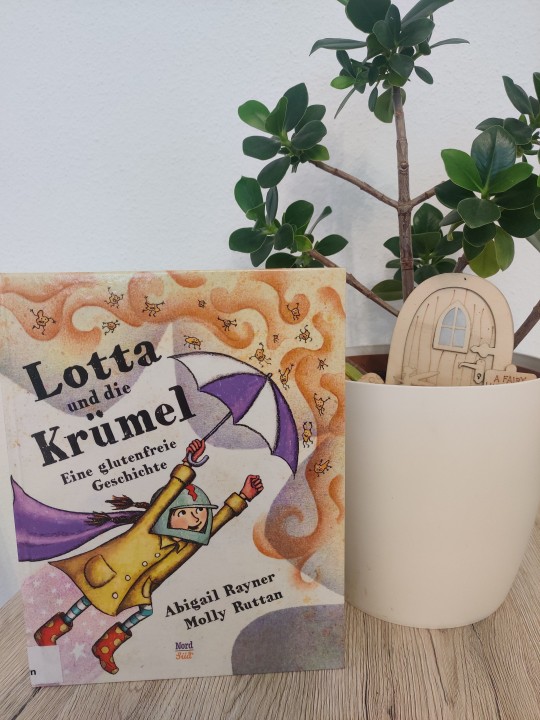
JOMP Challenge | November 15 | disabled character
English: Lotta and the Crumbs: A Gluten-Free Adventure
This is a beautiful children's book about the autoimmune disorder coeliac disease, my colleague bought it for my library and I actually cried reading it, seeing the representation for the first time in a children's book
#justonemorepage#jompbpc#booklr#books#children's books#my post#coeliac disease#autoimmune disorder#disability
13 notes
·
View notes
Text
This Black young woman @ faithbossinfear on TikTok is from the US is pleading for views on her video. She, her child and her mother (with 2 autoimmune diseases, high blood pressure and diabetes) are homeless. The young woman is the author of children's books. She is selling her books to try and support her mother. Please consider viewing and buying her books if possible.
1 note
·
View note
Text
#Henoch-Schönlein Purpura#HSP in children#HSP symptoms#Purpura rash#Immune system disorder#Pediatric vasculitis#Blood vessel inflammation#HSP causes#HSP treatment#HSP diagnosis#Joint pain in HSP#Abdominal pain and HSP#Renal involvement in HSP#Henoch-Schönlein Purpura complications#HSP rash#HSP prognosis#Autoimmune diseases in children#Childhood vascular diseases#HSP management#HSP in kids#health & fitness
1 note
·
View note
Text
Not One of the 72 Vaccines Mandated for Children Has Ever Been Safety Tested, Nor For Carcinogenesis, Mutagenesis, Or Fertility Effects
tinyurl.com/readtheinserts FDA approve COVID Vaccine for 6-month-old Babies despite Data proving Vaccinated Children are 30,200%/303x more likely to die than Unvaccinated Children – The Expose RFK JR; NOT ONE OF THE 72 VACCINES MANDATED FOR CHILDREN HAS EVER BEEN TESTED FOR SAFETY Wide Awake Media @wideawake_media Having been called a liar by Anthony Fauci for saying that “not one of the 72…

View On WordPress
#autoimmune diseases#cancer#children#safety tests#school shots#sterilization#vaccine mandates#vaccines
0 notes
Text
Understanding Diabetes: Comprehensive Overview of Types, Symptoms, and Management
Diabetes, an intricate and enduring medical condition affecting millions across the globe, arises from the abnormal accumulation of glucose (sugar) in the bloodstream, a result of either insufficient insulin production or the body’s impaired ability to use insulin effectively. This metabolic imbalance triggers a myriad of health complications, warranting an in-depth exploration and profound…

View On WordPress
#adolescence diabetes#advanced age#Autoimmune disorder#Blood Sugar Control#blood sugar levels#Blood Sugar Monitoring#Cardiovascular disease#childhood diabetes#children and diabetes#chronic medical condition#complications#continuous education#Diabetes#exercise with diabetes#expectant mothers#FAQs#Foot ulcers#genetic predispositions#gestational diabetes#glucose buildup#health complications#hereditary disposition#High blood pressure#hypertension#insulin injections#Insulin production#insulin pumps#Insulin therapy#insulin utilization#kidney damage
0 notes
Text
i Hate my mother for having children
#i wish i were never born#when i was born though my mother didnt know about all her conditions#but by the time my two sisters came around she Knew#she knew about all her autoimmune diseases and issues#so why would she have fucking children knowing there was a high chance theyd end up with the same things#like she has ms shes blind ankylosing spondylitis fibromyalgia some rare condition that causes her white blood cells to attack her body#and multiple doctors told her theres a moderate to high chance she would pass that on to any children#and now my mother is making it all about herself because my uoungest sister is having major health issues#like honest to god FUCK my mother#the most selfish person i know i swear to fucking god
0 notes
Text
some misc thoughts on child abuse and adultism/ageism:
in House M.D 2x16, the patient is a disabled teenage girl, melinda. she's had multiple life-threatening allergic reactions, the last of which led to a car accident which resulted in her needing a heart transplant. her mother is shown to be extremely protective of her (not allowing her to attend public school, not letting her go outside, restricting who can visit her) and this is a major issue in her and her daughter's relationship.
about halfway through the episode, melinda goes missing from her room. one member of houses' team, foreman, realizes she is trying to get outside and went to the roof. he finds her sitting in the stairwell, distressed. melinda reveals that her mother was always extremely controlling over her- the point of not allowing her to do seemingly any after-school activities- long before she got sick, and that her daughter's heart transplant "gave her what she always wanted." foreman responds by saying that, because of her current illness, it's "an insane time to criticize your mom for being overprotective."
melinda expresses that her mother's abusive behavior has now been retroactively justified by her disability; she is seen as "insane" for being distressed by what is clearly a life of restricted autonomy. the scene ends with a line that has stuck with me since seeing it: melinda looks up at the stairwell and says softly, "i didn't even try to get outside. i was too scared."
the actual plot of the episode isn't the point. the point is that we tend to view "children abused by foreign adults" and "children abused by their parents" as two separate categories with opposing needs. children being taken advantage of by strangers should have been monitored and restricted. like the mother in the episode, the parent assumes that being more protective = the child being more safe. the correct way to handle child abuse is parental vigilance. sure, maybe this behavior encourages some abusive parents (who are probably the minority anyways, because I would never abuse my child!), but that's just the price we pay for making sure the other children are safe?
what i think this episode shows- accidentally, seeing how they never actually take melinda's abuse seriously- is how you can be fucked over twice. a child who is being abused by someone online can also be abused by their parent- are probably even more likely to experience that because of an abusive home. and then, if that outside abuse is realized by the parent, it retroactively justifies their behavior. it proves not just to them but the adult world that controlling behavior is rational and helpful- clearly, the abuse was caused because they didn't control enough.
and in both the episode and this hypothetical, the parent's reaction- while it may include genuine feelings of love- also comes across as being more distressed over the violation of one's possession than being distressed on another person's behalf. the child is an extension of you, and thus any desires it has that conflicts against your own are like an autoimmune disease. something to be shut down as fast as possible. vulnerable children, abused children, the "sympathy" given to them is a double-edged sword because as soon as you aren't the quiet, docile creature who agrees with whatever the adults say, you are crazy and ungrateful and "don't you realize we just want what's best? look at what happened to you!"
770 notes
·
View notes
Text
placebo

stray kids x hybrid!ninth!reader (fem)
genre: light angst, mostly fluffy
content warnings: small swearing, mention of disease, mention of vaccination
word count: 1.8k
summary: the boys are shocked at how your hybrid features present themselves when you are feeling particularly emotional
requested: @shua-f4lmings
1K FOLLOWERS PLAYLIST 💚🖤
MAIN MASTERLIST
•••••••••••••••••••••••••••••••••••••••••••••••
How could it ever work being a Kpop idol when you were forced to hide a part of our identity every day? Well, you managed somehow. Despite the fact that you were a hybrid, JYPE still accepted your audition and allowed you to become a trainee. You felt fortunate that you didn't face direct discrimination from the company, considering you were part of a rare few, an experimental collective, of children that had turned into hybrids against their will. You see, there had once been terrible news of a new outbreak of an autoimmune disease breaking out, during your childhood, so when a vaccination was created, your parents had rushed at the opportunity to make sure you were safe. Little did you know, did anyone know, that it was in fact a scam. The disease - a hoax. The vaccination - contained a serum that caused you to experience genetic mutations and develop physical attributes very similar to a cat, all because of some deceiving scientists that wanted to experiment.
Luckily, you had learnt to love yourself and your feline features. Your fluffy black ears that helped your hearing become more sensitive, and perhaps even more attuned to music, your tail that would swish and perk up anytime you saw your members or somebody you loved, these all became things that you appreciated. It truly showed your strength and determination to not let anybody get you down, particularly when you used to feel like the black sheep, or, black cat, of the family.
You remember that it was not too long after Chan had gathered you all together as a unit, pre-debut, that you decided to reveal this side of you. After all, you could only wear baggy sweatshirts and beanies for so long.
"Guys, can I tell you something?" you spoke up after you were all sat evaluating a dance practice.
"I think we really should practice this dance again, can it wait?" Chan pondered, not wanting to miss any rehearsal time, especially since the new TV debut show was on the horizon.
"Please, it's important," you had urged them all, your future group members, not wanting to withheld this information from them for any longer.
"Ok, sure," Chan nodded and turned his phone off, before everyone was looking at you as you stood up.
"Is everything ok?" Hyunjin frowned.
"Yeah, I just want to share this side of myself to you. I've not been honest," you began, confident in yourself, just unsure about what their reactions would be.
"If we're going to be a group..." Changbin tilted his head.
"-that's why I'm telling you now! Sorry, I didn't mean to interrupt you. Umm," you apologised, feeling guilty.
"It's ok," Changbin nodded, seeing the weight of the situation in your eyes.
"Please can you just tell us? The suspense is killing me," Jisung groaned, whining after when Minho smacked him on the back without even looking.
"I don't know how to say it so..." you had taken a deep breath before pulling your beanie off, ruffling your hair back into plsce and ultimately revealing your ears. It had seemed like some sort of headband at first, but seeing the way your ears twitched and pointed at sharp intakes of breath or gasps in the room, showed that they were very real.
Poor Felix was incredibly confused. It was hard enough for the Australian boy to follow the conversation, and even harder to make sense of things as he saw your fluffy cat ears on top of your head.
"What the-" Jeongin's jaw dropped.
"Why are your ears moving like that..." Seungmin was astonished.
"I'm a cat hybrid. There was an experiment gone wrong a while back, masked as a 'cure', a vaccination, when really it was an experiment. So, umm, yeah, I'm sort of like a test subject.." you trailed off as Chan came to stand in front of you, raising his hand slightly.
"Can I touch your ears?" he questioned, which honestly wasn't what you were expecting. Instead, you thought it was time for him to go into his words of wisdom mode, but really even he couldn't avoid his own curiosity, as he waited for your response.
"Oh, yeah sure," you shrugged, a smile working it's way into your face as you felt a soothing scratch and pat to the head. It was so relaxing that you shut your eyes for a moment.
And when you opened your eyes...
"My turn! My turn!" Han was suddenly in front of you, Seungmin and Jeongin surprisingly waiting too.
"Wow, so cute!" Hyunjin was looking at you with the biggest heart eyes, and you could also lightly hear Chan explaining to Felix what had just transpired.
"Cute, haha," Changbin chuckled, stood next to you and observing your reactions.
"So you guys don't find it weird then?" you laugh as you ask, knowing that they were entranced.
"No! Never!" Seungmin shook his head.
"Me?" Felix came up behind Seungmin, half hugging his arm before asking permission to also pet your ears.
"Yes," you smiled reassuringly at the shy Felix.
The only one of the boys who hadn't interacted with you after you revealed your big secret was Minho, and perhaps that was because he simply couldn't comprehend that his fellow band member he had naturally grown protective over was also part cat. His favourite animal by a mile.
"I knew there was something feline about you," Minho hugged you tightly, the only one not to go straight for the ears.
"That's all the approval I needed."
Post revelation, you were able to feel even more relaxed around your members at the dorms, and wow, when they saw your tail, to be frank, they lost their shit. That was a story for another day though. You had more important things to think about them, such as the meeting that had been scheduled with the company before filming began. Understandably, in your opinion, they had found some medication, hybrid suppressants, that would hide your features. Some people would have been offended by the gesture but in reality, you were relieved. You just wanted to debut and you didn't want to take any attention away from the boys with your obvious differences in genetics. Although the first day of taking the pills felt rough, especially with your body having to withdraw physical features, you went through with it, initially explaining to the boys that it's what you wanted. Whether they believed you or not at the time, you weren't sure, until today...
"No way!" you gasped, clutching the blanket for dear life as you sat up from your comfy spot curled up on the sofa. Once again, you had chosen to use your vacation off from work as a chance to binge watch your favourite show, and finally, you had made it to the end.
"Don't roll credits, don't roll credits, don't- NO!" you cried out in disbelief. As if they had just killed off your favourite character. You sobbed, curling into yourself, ears flat against your head and tail curled up against you, like you were trying to protect yourself from the TV screen even though you had already turned it off and thrown the remote away from you in distress.
You hadn't realised that your hybrid features had popped out, not that it would be a problem as you were on break, but you must have forgotten to habitually take your tablets, the ones you bad taken the previous day finally wearing off. Even with the box being on the coffee table in front of you, the idea had left your mind.
It was long forgotten now.
It was a pitiful sight, the way you were trembling as you cried, but with your physical hybrid features also came mental ones, emotional ones, instincts that you couldn't help but follow. That emotional attachment that cats found with their people, happened to you and your favourite TV show. You felt hurt, betrayed, distraught.
"Rori?" Minho was the first to call out in concern, as the boys piled in from their outing at the beach. Yes, Rori, that was your stage name. It was a running joke between you all that Minho adopted Dori and her namesake was because of you. They weren't that dissimilar right?
"What's wrong? What's happening?" Felix called out in confusion, still taking off his sandy shoes by the front door. The boys had wanted you to come along with them, but you hated water, and would much rather laze around in the comfort of your own home.
"Aigoo, your tail is all fluffy," Jeongin patted your head, yet you continued to cry. The eight boys looked between each other in confusion until Jisung spotted the medication on the table and looked at Chan pointedly, hoping he took would connect the dots he had just found.
"Oh, Rori, we thought you didn't like taking the, it's ok. It'll be ok, we'll sort this," Chan rubbed your back gently.
"We can announce it to the fans," Hyunjin suggested, and the others nodded along.
"We'll have a word with the company," Changbin added, their plan already formulating before your very eyes.
"They'll still love you," Jisung didn't like seeing you cry.
"They won't care, you're still the same person," Seungmin spoke up, last to enter the room. He had soon caught onto the situation though, only after rinsing his feet from the sand that lingered. He couldn't barely the itchy feeling.
"What are you talking about?" you sniffled, lifting your head out from your arms and your ears lifted in curiosity.
"Aren't you sad because of, you know, having to take the tablets...?" Chan was confused, so much so that his hand had even stopped it's comforting motions on your back.
"No!!" you cried out, tail fluffing up even more, irritation flaring up ever so slightly as you wished you didn't have to explain yourself. It would much easier if these humans just knew what you wanted!
"Oh," Minho pursed his lips in thought.
"Then what's wrong?" Jeongin urged, eager to hear what was truly wrong.
"-died! It's not fair! They were my favourite and they were so kind and-" you whimpered tearfully, already having flashbacks of the final episode you and just watched.
"It's because of a show?!" Felix rose his eyebrows in surprise, leaning back to try and see your whole face.
"Really?" Seungmin sighed, pinching the bridge of his nose.
"It's not just a show!!!" you wailed louder, tail swishing now as you felt a mix of sadness and annoyance.
"Ok it's not just a show, we know that, chill, kitty," Jisung patted your head but Minho nudged him warningly, knowing you didn't like that nickname.
"Ji-" you huffed.
"But it's definitely not because of the suppressants, right?" Changbin cut you off, which was annoying at first, having being interrupted twice in a row, yet you were appreciative of the change in topic.
"No, no, I don't care about taking them. I'm fine with that," you took a deep breath and wiped your remaining tears away, "I just might need 2-3 business days to recover."
•••••••••••••••••••••••••••••••••••••••••••••••
tagged: @skz-streamer @kiraisastay @kpopmenace143 @haodore @arloo00 @dunno-wut-to-do @splat00z @his-angell @2minstan @skzoologist @lovingchan @atinyniki @writingforstraykids @lilmisssona @astraysimp @lixie-phoria @theo4eve @linoalwaysknows @royal-shinigami @jolly04 @turtledove824 @yangbbokari @thisrandomgoofy15 @lieslab @hannamoon143 @arumlilyeclipse
#skz#stray kids#skz x reader#stray kids x reader#skz fluff#skz angst#straykids imagines#stray kids fluff#stray kids imagines#straykids ninth member#skz ninth member#stray kids ninth#ninth member#stray kids ninth member#skz 9th female reader#skz 9th member reader#stray kids x 9th member#skz 9th member#stray kids 9th member#skz x hybrid reader#stray kids x hybrid reader
544 notes
·
View notes
Text
The Best News of Last Week - March 18
1. FDA to Finally Outlaw Soda Ingredient Prohibited Around The World

An ingredient once commonly used in citrus-flavored sodas to keep the tangy taste mixed thoroughly through the beverage could finally be banned for good across the US. BVO, or brominated vegetable oil, is already banned in many countries, including India, Japan, and nations of the European Union, and was outlawed in the state of California in October 2022.
2. AI makes breakthrough discovery in battle to cure prostate cancer
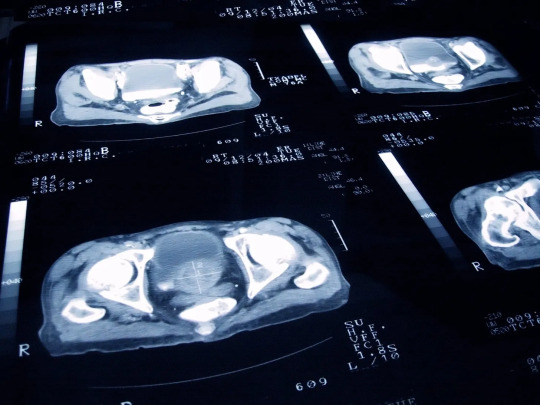
Scientists have used AI to reveal a new form of aggressive prostate cancer which could revolutionise how the disease is diagnosed and treated.
A Cancer Research UK-funded study found prostate cancer, which affects one in eight men in their lifetime, includes two subtypes. It is hoped the findings could save thousands of lives in future and revolutionise how the cancer is diagnosed and treated.
3. “Inverse vaccine” shows potential to treat multiple sclerosis and other autoimmune diseases
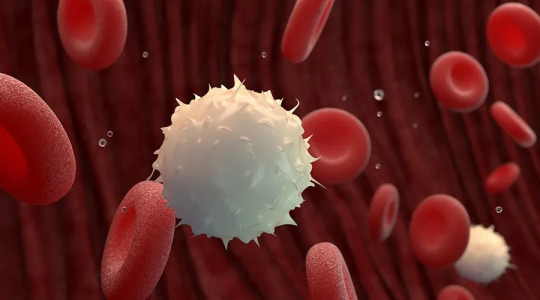
A new type of vaccine developed by researchers at the University of Chicago’s Pritzker School of Molecular Engineering (PME) has shown in the lab setting that it can completely reverse autoimmune diseases like multiple sclerosis and type 1 diabetes — all without shutting down the rest of the immune system.
4. Paris 2024 Olympics makes history with unprecedented full gender parity

In a historic move, the International Olympic Committee (IOC) has distributed equal quotas for female and male athletes for the upcoming Olympic Games in Paris 2024. It is the first time The Olympics will have full gender parity and is a significant milestone in the pursuit of equal representation and opportunities for women in sports.
Biased media coverage lead girls and boys to abandon sports.
5. Restored coral reefs can grow as fast as healthy reefs in just 4 years, new research shows
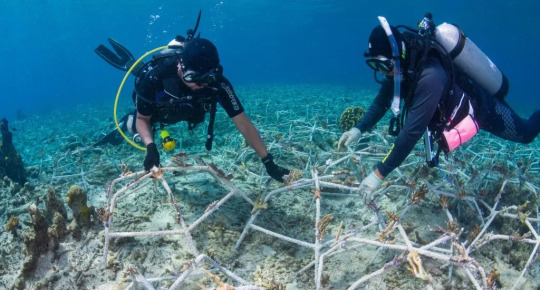
Planting new coral in degraded reefs can lead to rapid recovery – with restored reefs growing as fast as healthy reefs after just four years. Researchers studied these reefs to assess whether coral restoration can bring back the important ecosystem functions of a healthy reef.
“The speed of recovery we saw is incredible,” said lead author Dr Ines Lange, from the University of Exeter.
6. EU regulators pass the planet's first sweeping AI regulations
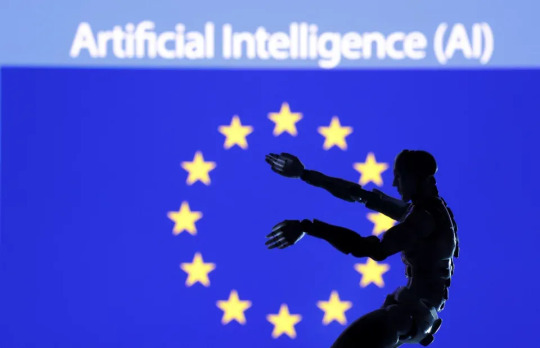
The EU is banning practices that it believes will threaten citizens' rights. "Biometric categorization systems based on sensitive characteristics" will be outlawed, as will the "untargeted scraping" of images of faces from CCTV footage and the web to create facial recognition databases.
Other applications that will be banned include social scoring; emotion recognition in schools and workplaces; and "AI that manipulates human behavior or exploits people’s vulnerabilities."
7. Global child deaths reach historic low in 2022 – UN report
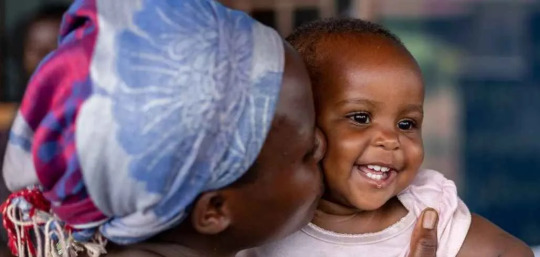
The number of children who died before their fifth birthday has reached a historic low, dropping to 4.9 million in 2022.
The report reveals that more children are surviving today than ever before, with the global under-5 mortality rate declining by 51 per cent since 2000.
---
That's it for this week :)
This newsletter will always be free. If you liked this post you can support me with a small kofi donation here:
Buy me a coffee ❤️
Also don’t forget to reblog this post with your friends.
781 notes
·
View notes
Text
To all kind-hearted souls,
I write to you today with a heart full of hope, praying that my voice reaches those who can help me in the difficult circumstances I am enduring. My name is Ienas, I am 30 years old, and I live in Gaza. Over a year ago, I lost my beloved husband, who was my pillar and the primary provider for our family, due to the war that destroyed our lives. He left me with two young children, Nasser (6 years old) and Bahaa (3 years old), to face life alone, without a home or stable shelter, after our house was destroyed, forcing us to flee to the south.
I suffer from a severe and chronic autoimmune disease for which no treatment is available in my country. I am waiting for a chance to travel abroad to receive the necessary treatment. Over time, my health has been deteriorating due to a lack of proper nutrition and the immense physical and emotional stress I am under.
My two children, Nasser and Bahaa, are also suffering from health issues. Nasser has a skin condition called "morphea" and flat feet, requiring specialized treatment. Meanwhile, Bahaa has acute intestinal inflammation that demands ongoing care and monitoring. Unfortunately, due to a lack of resources, I am unable to provide them with the treatment they desperately need.
With the war and destruction continuing, we have been relying on limited humanitarian aid that barely meets our basic needs. For over a year, we have survived on canned food, which has further worsened my health condition.
I launched a fundraising campaign to secure treatment for my children and myself. However, donations have stopped, and I am now in desperate need of your help—not just financially but also by sharing my story and spreading the campaign link among your friends and contacts.
Every share can make a difference and might save my life and my children's lives. Please, help me amplify my voice to the world. Let us come together to bring hope back to my children, who have known nothing but pain and fear since losing their father.
Please don’t let my children lose their mother too, as they lost their father to war. Help us. Donate or share now.





@chilewithcarnage @ghelgheli @sivavakkiyar @anneemay
@mavigator @lacecap @yugiohz @vakarians-babe @socalgal
@ankle-beez @lonniemachin @dykesbat @charlott2n @watermotif
@tamamita @serial-unaliver-deactivated2024 @vampiricvenus @punkitt-is-here @2spirit-0spoons @paper-mario-wiki @omegaversereloaded @nyancrimew @90-ghost @beserkerjewel @ot3 @killyourhistory @prisonhannibal @aimasup @anneemarye @dirhwangdaseul @neechees @memingursa @certifiedsexed @afro-elf @11thsense @sawasawako @vampris13 @girlinafairytale @spacebeyonce @skipppppy @beetledrink @schoolhater98 @3000s @annevbonny @fools-and-perverts2 @dailyquests @evillesbianvillain @wolfertinger666 @taffybuns @valtsv @postanagramgenerator @feluka @abdalsalam1990
#dangerous#pin#free gaza#@Urgent#batman#dan and phil#captain curly#jujutsu kaisen#agatha all along#formula 1#agatha harkness#free palestine
178 notes
·
View notes
Text
Happy rare disease day!
-> let's talk about lupus 💜🦋
lupus is sometimes referred to as "the most common rare disease" because it sits right on the line of the definition of rare. regardless, it's definitely true that people with lupus are hard to come by. we're lucky to have thriving online communities on some platforms (not Tumblr, RIP) but offline communities and support groups are few and far between.
lupus is an autoimmune connective tissue disorder named after... wolves, for some reason? there's a lot of debate over why someone several centuries ago decided wolves would represent us well.
there are several types of lupus but the most common is systemic lupus erythematous (SLE), when people are referring to lupus they are almost always referring to this type of lupus. this is the type of lupus I have and the type I know most about so this is the type I'll be discussing in this post.
The basics
lupus is an autoimmune disease that attacks all tissues in your body. yes, all. it can go after any form of soft tissue and even includes your brain and parts of your bones within its reach. this makes lupus a very hard to pin down disease because it can look like anything. I've heard it referred to as "the great imitator" which I think is an excellent title.
with that said, some targets are more common than others.
The symptoms
like the previous section implied there are thousands of presentations of lupus. just about everything has been recorded in association with lupus. my best friend once joked "I bet lupus doesn't cause gangrene" but a case study disagrees.
The lupus foundation of America has excellent resources on some of the most common effects on different body systems. they are by no means comprehensive but they give a good gist of symptoms
some of the key symptoms:
fatigue
joint pain & swelling, arthritis
severe, persistent headaches that don't respond narcotic analgesics
fevers
sensitivity to UV light (UV triggers symptoms)
the butterfly rash (a red, painless rash across your cheeks and the bridge of your nose- sometimes your chin as well)
hair loss
mouth ulcers (typically with a white ring around them)
Raynaud's phenomenon
-> having these symptoms does not automatically mean you have lupus. please do more research before self diagnosing 🙏 if you think you have lupus I would strongly recommend seeing a doctor ASAP! lupus can go from fine to dead in a matter of minutes. <-
Death by lupus
lupus survival odds have increased substantially in the last 20 years but the disease remains incredibly dangerous- particularly to those of us with severe or refractory (non/under responsive to treatment) versions of it. the younger someone develops lupus, the more likely they are to have a severe presentation of the disease.
in particular, children with the disease (under 10) have very low survival odds.
lupus can kill in an almost infinite number of ways. lupus is capable of killing quickly with blood clots, strokes, pulmonary embolisms, heart attacks, and much more. lupus is also capable of killing slowly through lupus nephritis.
lupus nephritis is present in about 40% of people with lupus. lupus nephritis is a kidney disease causing kidney inflammation. it is highly destructive and often leads people to kidney dialysis, kidney transplant, and death by kidney failure. developing lupus nephritis drops your survival rates significantly.
Treatment
lupus is treatable for most people! the most common treatments include immunosuppressants, steroids, and anti-malarials.
many, if not most, people with lupus are immunocompromised. (which is why it's always good to wear a mask)
while refractory lupus does exist, most people with it are able to get their disease under control.
#physical disability#physically disabled#chronic illness#chronically ill#systemic lupus erythematosus#rare disease day
117 notes
·
View notes
Text
Hey there friends
I wanted to hold off making any donation posts until I knew how much it would cost but the situation got a lot more dire.
Mom's had a heart attack, my grandpa died, and my uncles are coming after our house.
My grandfather died just before Christmas, it was a shock to all of us as he seemed to be doing fine. His final wishes were to be cremated and spread over the beaches with my grandma, everyone has known this, but because he didn't write a will before getting sick with Alzheimer's and dementia all of his children have to agree on what to do with his body. If they don't he gets turned over to the state and disposed of, and we never get him back.
Yesterday my mom had a mild heart attack, she's still in the hospital now (though she seems to be doing better) because we found out my uncles are refusing to cooperate. I'll explain the full story under the cut but they haven't been around for over twelve years and are now coming after our house.
The funeral is at minimum going to be 4k not including any lawyers we need to get to get control of his body and fight my uncles. If you can spare anything at all, please I'm begging more now than ever before, donate if you can or just reblog.
Thank you all, so much, for everything you do and have done.
My uncles have never been around, the last time was after a settlement from my grandmothers wrongful death where they took almost all the money. We got enough to buy our current house and that was it. My mom and grandpa specifically put on the deed that they both owned it so my uncles couldn't steal it once my grandpa passed away.
Well, we found out it is considered an asset, until we are able to get a death certificate to get his name off the house and give my mom full ownership, my uncles can technically try and get a part of his assets (even though we have no other money).
We haven't seen them in 15 years. They weren't around when we had to take care of my grandpa after his surgery in 2016 and his decline in mental health after. We couldn't afford to put him in a home so we did what we could.
They weren't there during the outbursts and anger of my grandpa not knowing who we were, having to give him baths, change his diapers, taking him to the hospital, making sure his food was soft enough he could eat it. But now they think there's money on the line and they want to bleed us dry when all we have is our house.
We were told all of this yesterday at the funeral home, told that if we don't go to court or they don't all agree on what to do with his body then he gets turned over to the state and disposed of. We would never get him back.
The stress caused my mom to have a minor heart attack, she was transferred to a bigger hospital and is currently having a cath test done because she already has an autoimmune disease.
I can't do much else to help other than come on here and ask for help, I have so many of my own illnesses that prevent me from working and the government is giving me a tough time trying to get on disability.
It's a lot and I'm just so lost and I'm sorry to ask again, I'm sorry to make another donation post, but please, we need this so much, every bit helps.
#im notgood at it but maybe if you donate i could draw your pet if thats any incentive?#i feel bad asking so much of everyone#its just been such a year and im just so tired#i just want to make everything okay again#but i feel so helpless#donate#donations#donate if you can#kofi#ko fi support#please help#bills#signal boost#boost#don't mind me
96 notes
·
View notes
Text
Genetically Modified Pluripotent Stem Cells May Evade Immunological Rejection After Transplantation - Technology Org
New Post has been published on https://thedigitalinsider.com/genetically-modified-pluripotent-stem-cells-may-evade-immunological-rejection-after-transplantation-technology-org/
Genetically Modified Pluripotent Stem Cells May Evade Immunological Rejection After Transplantation - Technology Org
Researchers say the genetically engineered stem cells also could pave the way for new regenerative medicine treatments for diseases such as Type 1 diabetes.
Deepta Bhattacharya, who is on the University of Arizona Health Sciences Center for Advanced Molecular and Immunological Therapies advisory council, is a professor of immunobiology in the UArizona College of Medicine – Tucson. Image credit: UArizona Health Sciences
One of the biggest barriers to regenerative medicine is immunological rejection by the recipient, a problem researchers at the University of Arizona Health Sciences are one step closer to solving after genetically modifying pluripotent stem cells to evade immune recognition.
The study “Engineering Human Pluripotent Stem Cell Lines to Evade Xenogeneic Transplantation Barriers” was published in the journal Stem Cell Reports last week.
Pluripotent stem cells can turn into any type of cell in the body. The findings offer a viable path forward for pluripotent stem cell-based therapies to restore tissues that are lost in diseases such as Type 1 diabetes or macular degeneration.
“There has been a lot of excitement for decades around the field of pluripotent stem cells and regenerative medicine,” said principal investigator Deepta Bhattacharya, a professor in the UArizona College of Medicine – Tucson’s Department of Immunobiology. “What we have learned from the experiences of organ transplantation is that you have to have matched donors, but the person receiving the transplant often still requires lifelong immune suppression, and that means there is increased susceptibility to infections and cancer. We’ve been trying to figure out what it is that you need to do to those stem cells to keep them from getting rejected, and it looks like we have a possible solution.”
To test their hypothesis, Bhattacharya and the research team used CRISPR-Cas9 technology, “genetic scissors” that allow scientists to make precise mutations within the genome at extremely specific locations.
Using human pluripotent stem cells, the team located the specific genes they believed were involved in immune rejection and removed them. Prior research into pluripotent stem cells and immune rejection looked at different parts of the immune system in isolation. Bhattacharya and his colleagues from The New York Stem Cell Foundation Research Institute, St. Jude Children’s Research Hospital and the Washington University School of Medicine opted to test their genetically modified stem cells in a complete and functional immune system.
“The immune system is really complicated and there are all sorts of ways it can recognize and reject things,” said Bhattacharya, a member of the UArizona Cancer Center and the BIO5 Institute who also serves on the UArizona Health Sciences Center for Molecular and Immunological Therapies advisory council.
“Transplantation across species, across the xenogeneic barrier, is difficult and is a very high bar for transplantation. We decided if we could overcome that barrier, then we could start to have confidence that we can overcome what should be a simpler human-to-human barrier, and so that’s basically what we did.”
The research team tested the modified stem cells by placing them into mice with normal, fully functioning immune systems. The results were promising – the genetically engineered pluripotent stem cells were integrated and persisted without being rejected.
“That has been the holy grail for a while,” Bhattacharya said. “You might actually have a chance of being able to perform pluripotent stem cell-based transplants without immune suppressing the person who is receiving them. That would be an important advance, both clinically and from the simple standpoint of scale. You wouldn’t have to make individualized therapies for every single person – you can start with one pluripotent stem cell type, turn it into the cell type you want and then give it to almost anyone.”
The next steps, Bhattacharya said, include testing the genetically modified pluripotent stem cells in specific disease models. He is already working with collaborators at The New York Stem Cell Foundation and the Juvenile Diabetes Research Foundation to test the technology in animal models for Type 1 diabetes.
“We needed to overcome the immune system first,” Bhattacharya said. “The next steps are how do we use these cells? We set the bar pretty high for our study and the fact that we were successful gives us some confidence that this can really work.”
Bhattacharya also is the co-founder of startup Clade Therapeutics in Boston, which licensed the technology through Tech Launch Arizona, the University of Arizona’s commercialization arm. Clade Therapeutics is establishing a robust cellular platform using stem cell-derived immune cells for the treatment of cancer and autoimmune diseases. The company said it hopes to begin clinical trials by the end of the year.
Co-authors on the paper include Hannah Pizzato, research specialist in the College of Medicine – Tucson’s Department of Immunobiology; Dr. Paula Alonso-Guallart, James Woods and Frederick J. Monsma Jr. of The New York Stem Cell Foundation Research Institute; Jon P. Connelly and Shondra M. Pruett-Miller of the St. Jude Children’s Research Hospital; and Dr. Todd A. Fehniger and John P. Atkinson of the Washington University School of Medicine.
This work was supported in part by the National Institutes of Health under award no. R21AI132910 and the Bill and Melinda Gates Foundation (OPP1206188).
Source: University of Arizona
You can offer your link to a page which is relevant to the topic of this post.
#Aging news#arm#autoimmune diseases#barrier#Biotechnology news#Cancer#cell#cell lines#Cells#Children#college#CRISPR#CRISPR-Cas9#diabetes#Disease#Diseases#engineering#Featured life sciences news#Foundation#genes#genetic#Genetic engineering news#genome#Health#Health & medicine news#how#human#immune cells#immune system#immunological rejection
1 note
·
View note
Text
Chronic Disease Kyle Headcanon
I bet you guys did not know that Diabetes type 1 is actually an AUTOIMMUNE disease (I didn’t know before medical school !! ). We also see Kyle Broflovski losing his kidneys in one episode. So this tells me that he has a fucked up immune system which doesn’t stop attacking him.
Henoch Schönlein Purpura is common for children (which makes more sense) but I will headcanon him as a Lupus patient because HSP resolves within weeks and isn’t lifelong. However childhood-onset Lupus is a more aggressive disease.
I imagine him:
Cartman: All this pills are bullshit because big pharma is trying to control us.
Kyle: If it wasn’t for the “big pharma” I wouldn’t be fucking ALIVE, CARTMAN.
Cartman: Just cut the fucking bitch pill Kyle you wouldn’t die.
Kyle: NO I ABSOLUTELY WOULD my body HATES me.
Cartman: You’re brainwashed by doctors, they are SUPPRESSING your IMMUNE SYSTEM so you can rely on the pills YOUR WHOLE LIFE Kyle. Open your eyes 👁️
Kyle: I fucking— can’t. I can’t Stan. Take me before I punch this fucking asshole’s shit face—
Stan: Alright that’s enough guys.
Kenny: Hmhmhmhmmm
Cartman: Exactly Kenny knows it.
55 notes
·
View notes